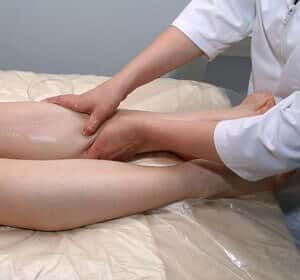
A weekly whole-body massage sounds like a luxury, but new research suggests it could help people with knee arthritis live with less pain (Journal of General Internal Medicine, online Dec 12, 2018). It is not clear exactly how this technique works, though, since the massage is not limited to the area around the knees.
Conducting the Study:
Investigators recruited 200 patients with osteoarthritis of the knees. They provided a one-hour Swedish massage session every week for eight weeks to one-third of these people. One-third of them got a light touch treatment to serve as a control group. The final third received no additional treatment beyond their usual care.
After eight weeks, the investigators randomly assigned people in the massage group to continue with bi-weekly treatment or none. In addition, individuals in the usual care group were offered the opportunity to participate in eight weeks of massage after the first six months.
The participants filled out a standardized questionnaire called the Western Ontario and McMaster Universities Arthritis Index (WOMAC). This validated scale is designed specifically to measure arthritis symptoms. The volunteers also rated their pain, demonstrated range of motion of their knees, and walked 50 feet. The researchers timed the walk to evaluate speed and ease of walking.
How Well Did Massage Relieve Pain?
Volunteers who got massages reported significant improvement on the WOMAC score at eight weeks. They also rated their pain and stiffness significantly better on other measures. Once the intervention was complete, however, the benefits started to fade. After one year, the various study groups did not have different WOMAC scores. Perhaps this is partly because of the cross-over between groups following the initial eight-week period.
One advantage of massage over medication: no side effects were reported. That is not always the case for treatments such as steroid shots or arthroscopic surgery. NSAID pain relievers and even acetaminophen also have potential adverse effects, so patients must weigh the benefits of pain relief against the risks.

